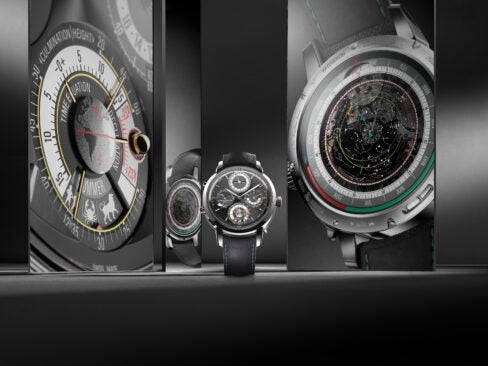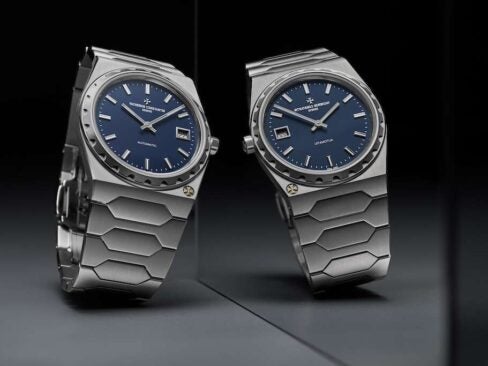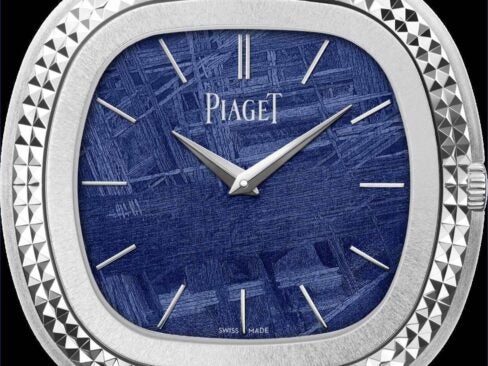These exceptional watches combine musicality and haute horlogerie in the same dial, thanks to the delicate art of marquetry which uses wooden mosaic techniques to create a unique feel for each piece. Their common signature: colours that reflect a national flag; a guitar with an open sound hole to reveal a tourbillon.
 Every year, Parmigiani Fleurier creates timepieces linked to the world of music, which represent the brand’s long-standing partnership with the Montreux Jazz Festival.
Every year, Parmigiani Fleurier creates timepieces linked to the world of music, which represent the brand’s long-standing partnership with the Montreux Jazz Festival.
The Tonda Mambo, the latest addition to this exceptional series of unique pieces in wooden marquetry, is without doubt the most sophisticated and complex piece yet produced. With its sultry Latin tones, it represents a Cuban musician plucking the strings of his guitar in an improvised melody from his homeland — the Mambo.
The beauty is in the detail The art of marquetry involves cutting pieces of wood according to a specific motif, then assembling and fixing them in enclaves to breathe life, piece by piece, into the final design. The slightest inaccuracy in a piece or error in its cutting process will result in a fault that can throw the entire mosaic off-balance. The smaller the pieces, the more complex the marquetry.
Given this, it’s easy to imagine the challenge posed by the Tonda Mambo, considering the sophistication of its details. This marquetry represents a type of “high definition” rarely seen until now in this art form, creating a powerful fresco that lends a precious character to the piece. For example, the musician’s polka dot shirt comprises two different dot motifs. A single motif would certainly have been enough to decorate the garment, but the doubling of the motif, in the spirit of aesthetic rigour expected from a clothes designer, reveals a desire to enhance the marquetry through its sophistication; sharpening the focus on details to incorporate the most intricate pieces, regardless of how difficult the execution.
Another similar example: the black lines used to trace and delineate the musician’s features, hands, hat and guitar. This network of lines, no thicker than a hair’s breadth, reinforces a boundary that several segments did not strictly need. However, the lines provide a contour for the marquetry, give it contrast and relief, and lend character to the figure’s features. The structure requires tremendous care to execute, but results in an exquisitely precious dial.
 When the wood becomes the motif
When the wood becomes the motif
Every wood fibre is unique, and creates an extremely specific effect. Selecting materials to suit each piece of marquetry demands perfect knowledge of the properties of wood, and is of crucial importance. The Tonda Mambo is characterised by its very carefully chosen veneers.
The musician’s straw hat is made from Koto Maille, a type of wood with a natural braided effect which reproduces the mesh of the straw hat. His face and hands are made from pear wood, a very fine, luminous wood reminiscent of the texture of skin.
Finally, his shirt is made from burr walnut, a wood whose fibres form natural folds, beautifully capturing the crumpled texture of fabric. The type of wood has been selected so that the fibres of the various pieces help create the motif, sometimes even becoming the motif, as if their intrinsic properties made them an extension of the marquetry.
Contemporary, luxury marquetry
It is the fine detail that makes the Tonda Mambo such a precious piece. This quest for detailed perfection, down to the tiniest of fibres, turns this marquetry into something precious, contemporary and sophisticated that goes way beyond simple representative design: it creates a unique feel.
(Source: Parmigiani Fleurier)










